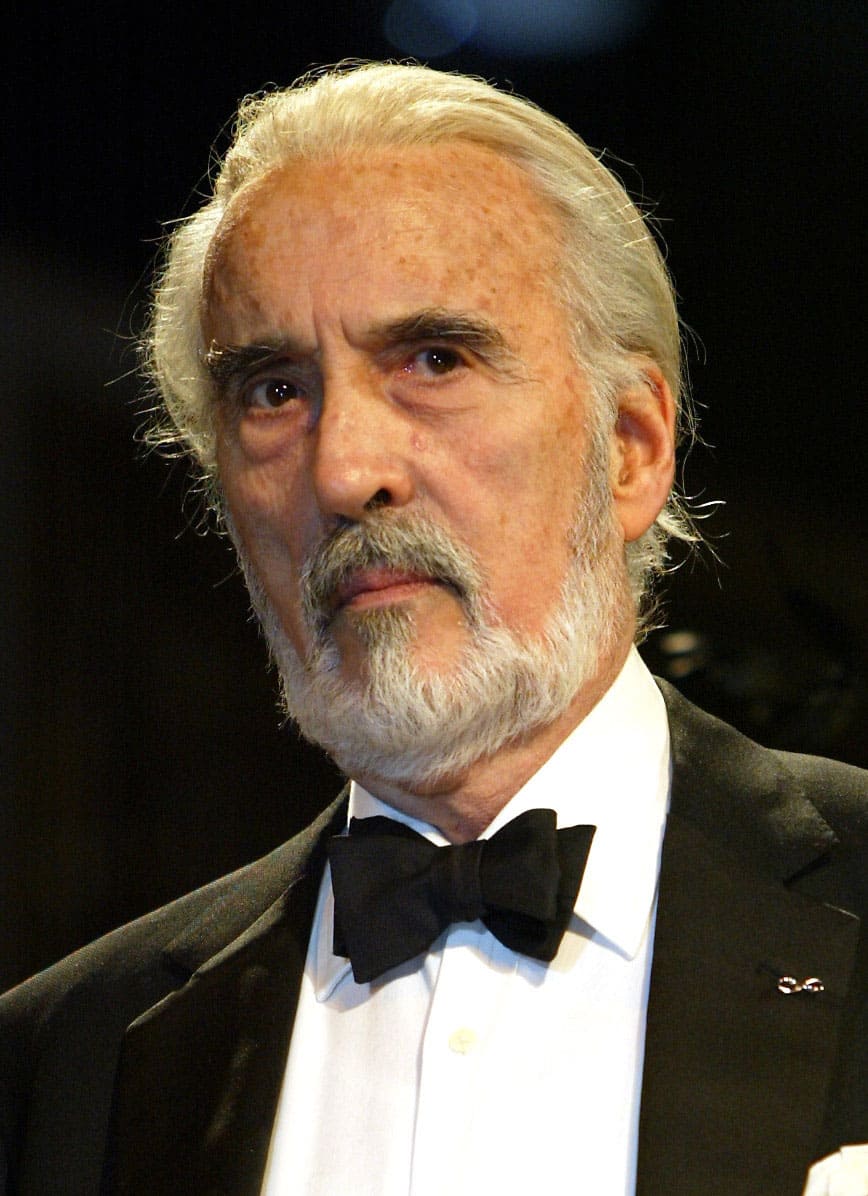Hammer Horror – Britain’s Studio Of Blood: THE CURSE OF FRANKENSTEIN
 With the release of Let Me In this weekend, a once popular British studio returns to their bloody roots. Hammer was once known as Britain’s most important producer of Gothic horror. Turning out, year after year, tales of mummies, vampires, werewolves, and zombies, Hammer became a name synonymous with horror. From 1957 to 1972, Hammer saw its star rise in Britain as well as the US film market. Cinema fans and horror fans alike came in crowds to see Peter Cushing’s Victor Frankenstein and Christopher Lee’s Dracula. Then with the rise of American filmmakers in the seventies re-inventing new ways to scare us (The Exorcist), Hammer’s monsters slowly seemed to fade away. Now the studio is releasing their first horror film in over thirty years: Let Me In. In honor of the renowned studio’s return to horror, and in the spirit of the month of October, I will be looking back at the films that made Hammer the studio for horror. Today, I will be looking at the first film that put Hammer on the horror map: The Curse of Frankenstein.
With the release of Let Me In this weekend, a once popular British studio returns to their bloody roots. Hammer was once known as Britain’s most important producer of Gothic horror. Turning out, year after year, tales of mummies, vampires, werewolves, and zombies, Hammer became a name synonymous with horror. From 1957 to 1972, Hammer saw its star rise in Britain as well as the US film market. Cinema fans and horror fans alike came in crowds to see Peter Cushing’s Victor Frankenstein and Christopher Lee’s Dracula. Then with the rise of American filmmakers in the seventies re-inventing new ways to scare us (The Exorcist), Hammer’s monsters slowly seemed to fade away. Now the studio is releasing their first horror film in over thirty years: Let Me In. In honor of the renowned studio’s return to horror, and in the spirit of the month of October, I will be looking back at the films that made Hammer the studio for horror. Today, I will be looking at the first film that put Hammer on the horror map: The Curse of Frankenstein.
The Birth of Gothic Horror: Hammer Horror
The Curse of Frankenstein came at a pinnacle point in the history of Britain’s Hammer Productions. Though previously focusing on adventure, comedy, drama, and science fiction films, Hammer decided to take things to a darker level. Stemming from a suggestion by Jack Goodlatte to remake Universal’s Frankenstein, Hammer began production on the film in 1956. Originally under the working title Frankenstein and The Monster, Hammer got a script together but ran into a bump in the road. Although Mary Shelley’s Frankentein novel was in the public domain, Universal stepped in and threatened a lawsuit. Universal was nervous that Hammer’s film would be too similar to their classic version. Hammer was eventually allowed to make “their version” of the story, as long as it didn’t include anything treading too closely to Universal’s version. One of the most important aspects was that the Frankenstein monster could in no way resemble Jack Pierce’s iconic make-up he did on Boris Karloff. After the deal was worked out with Universal, Hammer moved on to find the director. Who they found was Terence Fisher. Now known as the man that created the Gothic horror that Hammer became known for, Fisher pushed for something that the studio and distributors were against: A British actor in the lead. At the time, to secure success in over-seas markets, the studio and distributors pushed for American actors in the leading roles of their films. Instead, Curse of Frankenstein’s exceptional cast was lead by popular British actor Peter Cushing. In the role of the “creature” (they changed it to creature instead of monster for legal reasons), Hammer got Christopher Lee. Lee, who later became known for his portrayal of Dracula (which we will visit in a future article), was completely unknown at the time but was asked due to the fact that he shared the same agent as Peter Cushing. The Curse of Frankenstein was originally meant as a cheap black and white film for the studio. Yet after the new script was in place and the director and actors were chosen, it was soon decided to film it in Eastmancolour. This decision made The Curse of Frankenstein the first British horror movie to be made in color! The film was released on May 2nd, 1957 at the Warner Theater in Leicester Square to record-breaking crowds. When it was released in the US, it performed even better. Columbia Pictures made note of this and made a deal with Hammer for the release of Hammer’s future films. It was clear what direction Hammer was going for future films: Gothic Horror.
The Curse of Frankenstein (1957)
The movie opens with the aged Baron Victor Frankenstein in a murky jail cell awaiting execution. He then recounts how he got in his current predicament to a skeptical priest. Told through flashback, the film shows the Baron, with the help of his assistant Paul, explore new areas of science. After re-animating a dog’s corpse, Victor becomes determined to bring a man’s corpse to life again. As Victor gathers the limbs and parts he needs, Paul becomes less interested in the Baron’s creepy doings and more interested in Victor’s soon to be wife, Elizabeth. Frankenstein finally completes his creature but doesn’t have a way to control him. After a murderous rampage in the city, the two finally bring the creature down. Through all of this, Paul becomes even less interested in the Baron’s experiments and goes off. Victor marries Elizabeth and everything seems to be normal again in Frankenstein Manor. Yet the Baron can’t seem to let his creation go. Victor raises the creature once more, and this time with even deadlier results.
Unlike Universal’s Frankenstein, Curse is more interested in capturing the reasoning of Victor rather than the exploits of the creature. Universal’s Victor Frankenstein had more of a maniacal mad doctor feel to him. While Peter Cushing’s portrayal has more of a cool and reserved tone that can certainly be seen as precursor to Jeffrey Comb’s Herbert West in Re-Animator. This is not to say that this doctor is all serious. In the movie he certainly comes off as sinister in a few key scenes. The “curse” of the title refers more to the Baron’s cursed fascination with creating life than the deformed child-like creature. Though the violence in the film is tame by today’s standards, you can only imagine audiences in 1957 viewing severed heads, hands, eyeballs, and brains. Christopher Lee’s rough and tattered looking creature reminds you of a scarecrow that was pieced together (verses the nuts and bolts of Universal and Karlof’s look). When Lee is first revealed, it is quite shocking. One violent scene that is still particularly startling involves a character being pushed over a second floor railing. The film does move a little slow considering that the creature doesn’t come alive until around the fiftieth minute. During the wait, we are treated to great shots of the classic set design. There is something about seeing a mad scientists laboratory that I always find intriguing. Beside the usual questions of “playing God” and creating life, the film does include some scenes of dark humor. When Elizabeth announces to Paul that her and Victor are going to get married, the director immediately cuts to a scene of Victor making-out with his maid. The film is certainly a classic, just for the fact that it catapulted Cushing’s and Lee’s horror careers. Yet, I honestly enjoyed the film as a horror classic as well. Though dated at times, I do feel it is a superior film to Universal’s Frankenstein. It also helped usher in just a taste of the gore and scares that some of the later Hammer films are known for.
As I said earlier, I will be looking at several of the classic films in the history of Hammer Horror, all month long. Check back every week to find out what British horrors I will be spotlighting.
Throughout the month of October, Turner Classic Movies will be showing Hammer’s classic films every Friday night. You can catch The Curse of Frankenstein, Friday, October 29th at 8:00pm. For a full schedule of their films, click here.





